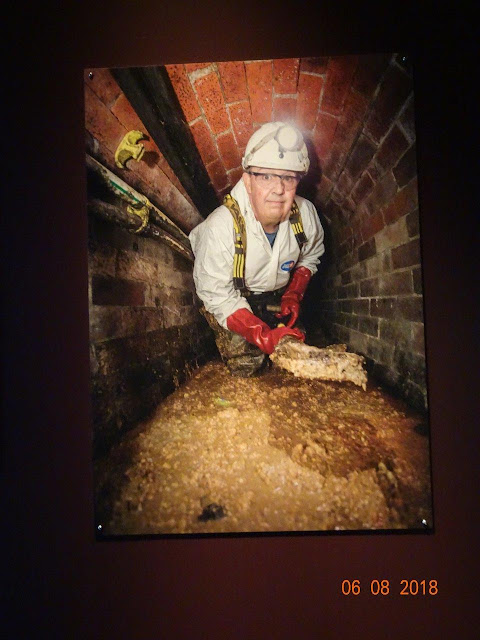I am also glad to be getting back to my own home on wheels where I always have my own bathroom, my own comfortable bed, and my refrigerator and kitchen. I also will be glad not to have to lug suitcases and my laptop backpack around.
Some things I really enjoyed in the U.K. are:
- The excitement, shopping, and history of London. Where else are their crowds on the streets late at night? What city in the U.S. do you have to fight your way onto the underground at 11:00 p.m. on a weekday night?
- Being able to see Hamilton, The Book of Mormon, Aladdin, and Kinky Boots live in the West End for a lot less money than I could have in NY.
- Pret a Manger and all the other convenience stores that offered great take-out food. The variety and quality of their sandwiches, salads, deserts, and other items are just not available in the U.S.
- The incredibly polite and trusting England and Scots. People don't worry about locking houses, at least in Scotland, and I had wonderful help finding information about my ancestors from perfect strangers.
- The incredible age and history of ordinary things, such as farmhouses in the country, and homes in small towns. Because Great Britain was deforested a couple of thousand years ago, almost all buildings were made of stone and stone lasts. The two churches I got tours through where my great-great-grandparents were married and baptized in the 19th and even 18th centuries were a few hundred years old even when they attended these churches!
- London cab drivers. They are amazing at how they navigate narrow and back roads to get you to your destination.
- The smokers. They stopped people from smoking in public buildings a decade ago, but that has driven them out into the streets. In cities like London, you have to do a lot of holding your breath and veering to avoid cigarette smoke.
- The lack of ice. The Brits STILL do not like ice in their drinks. If you ask for a drink with ice, they will give you a bottle of something like Coke and two ice cubes in a very small glass. When I could, I stopped into a McDonald's or Burger King and got a Coke with ice, but it was still hard to get enough ice. The assumption is that all that every adult wants is a hot drink, so hotel rooms come thoroughly equipped with tea makers and cups. No ice machines anywhere in hotels.
- The lack of iced tea. Most Brits cannot imagine why anyone would want their tea iced, so the only place you get a facsimile is in a Starbucks where they have a good mango black tea lemonade and will give you lots of ice.
- Drivers in England who speed on very narrow roads. I am talking about roads where there is only about a foot between cars as you pass, with stone walls or stone buildings on the edges of the road. And roads where you have to pull over and stop to let someone go past. Drivers in Scotland do not seem to drive as fast on these narrow roads, so it was an entirely different experience there.
- Stairs in the Underground stations. Very few places in the U.K. are handicap accessible, so you see almost no handicapped people out in public. One cause is that few Underground stations have elevators or escalators. If you have to lug a heavy suitcase or cannot climb stairs, you have to take a slower bus or a more expensive taxi or stay home.
There were problems with the return ticket I bought on arrival in Heathrow being good only for 30 days, except that I stayed for 42 days. I had to buy a replacement one-way ticket, but the kind lady in the station bumped me up to the first-class carriage. Nice ride, but very short.



































































